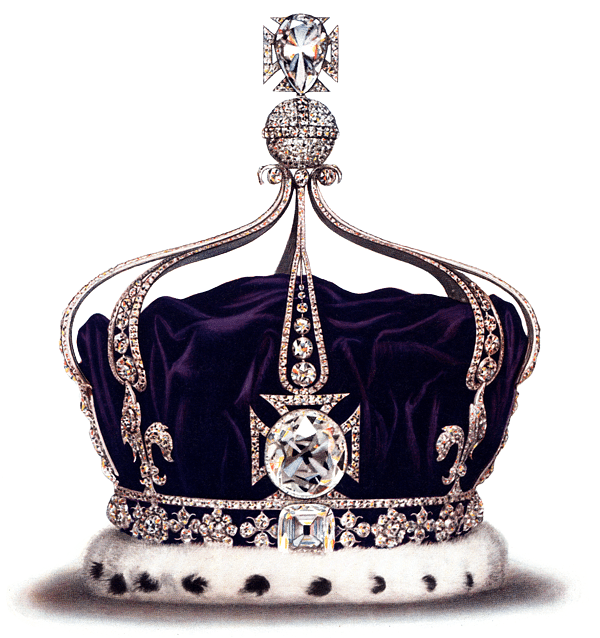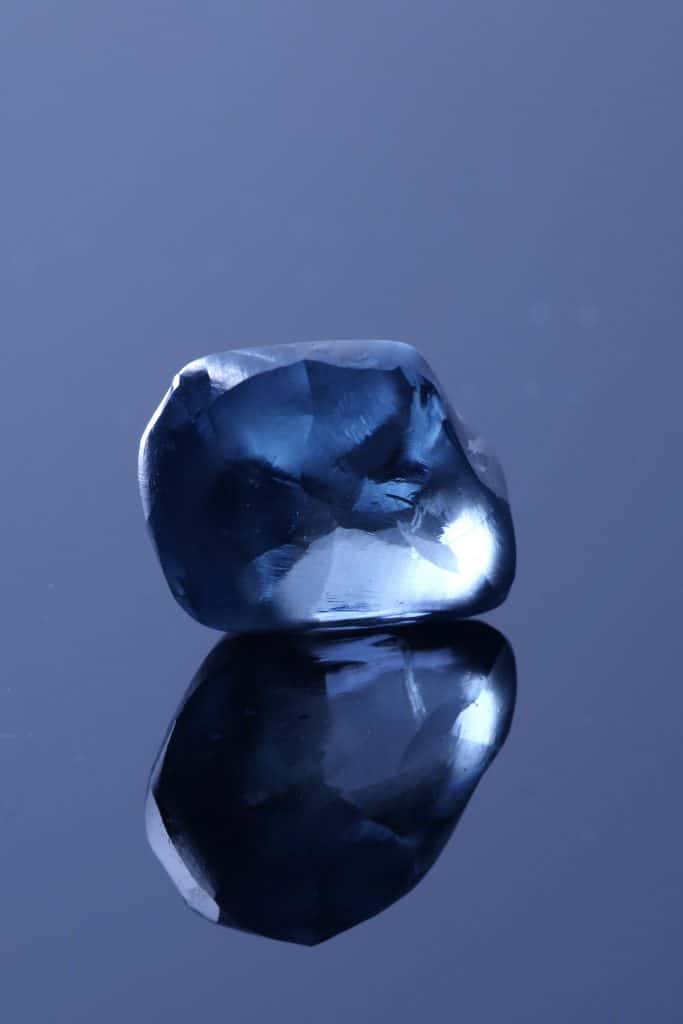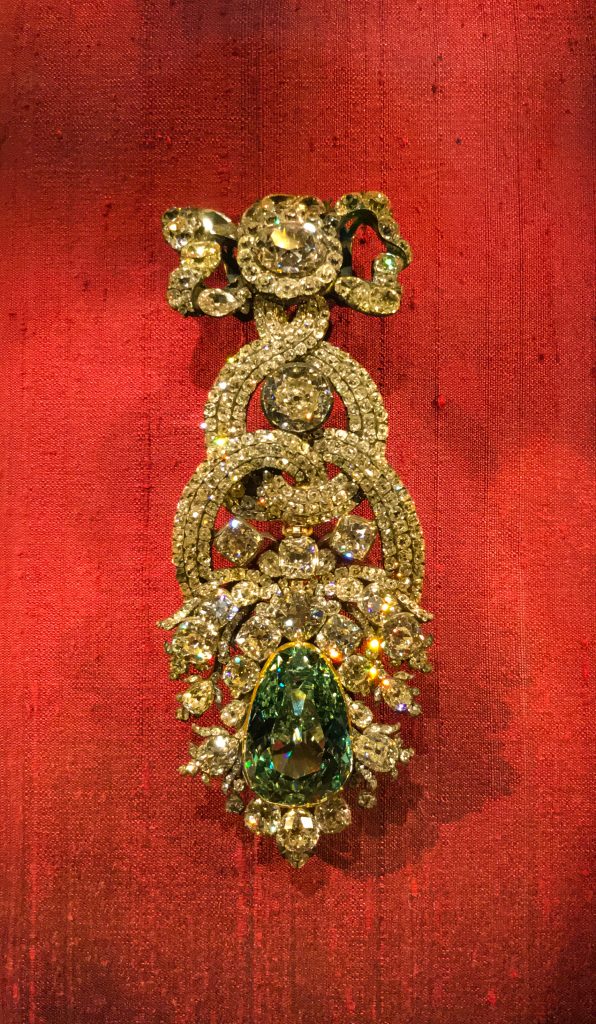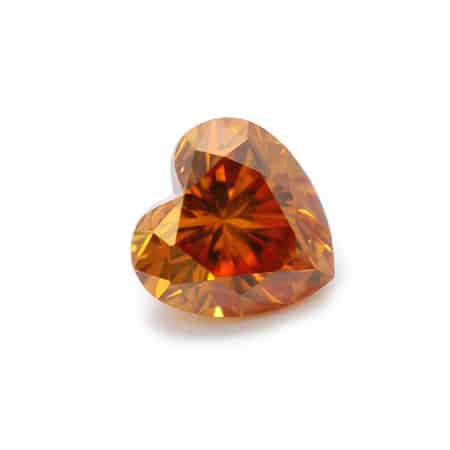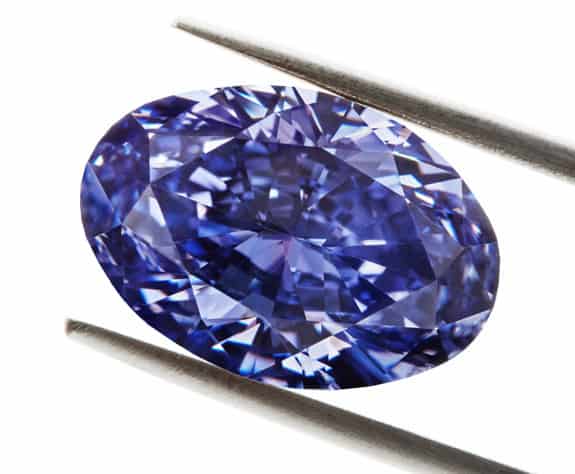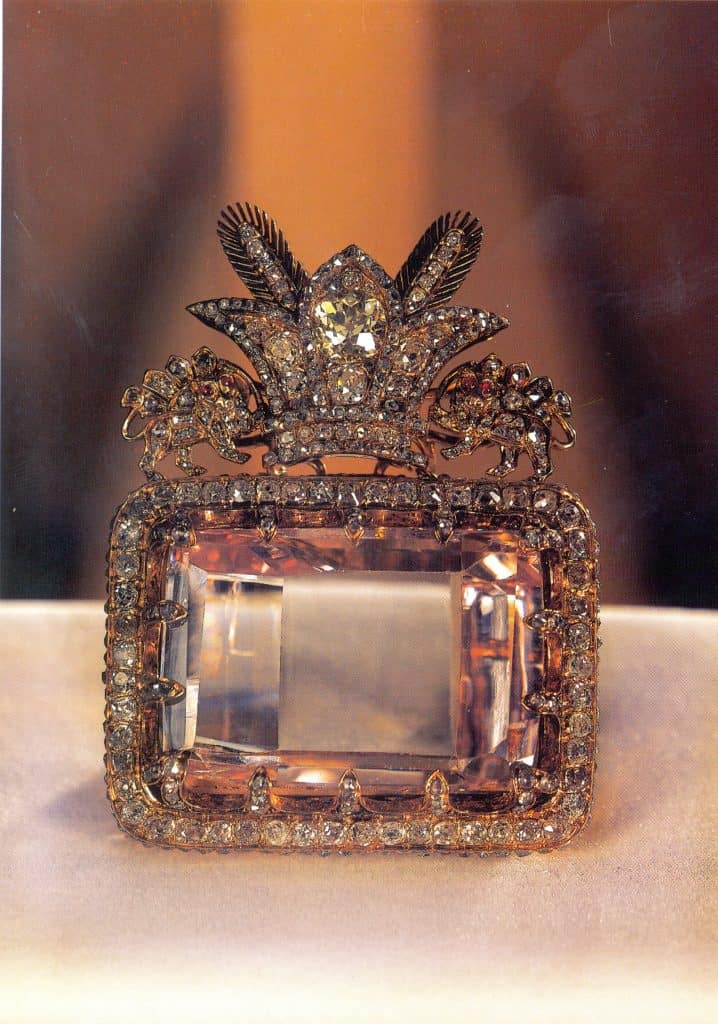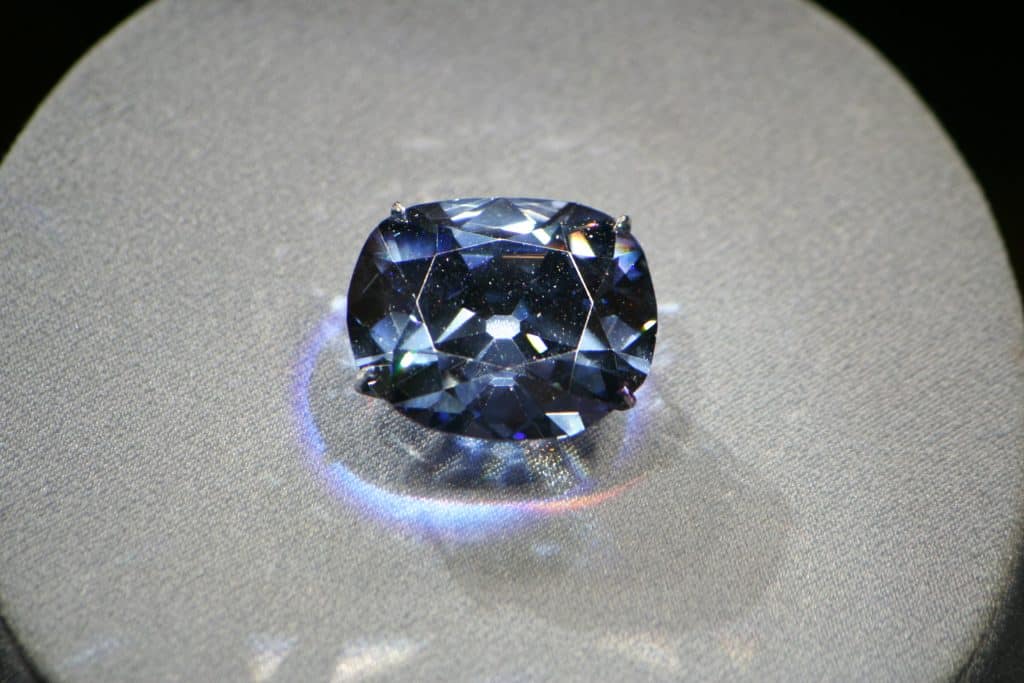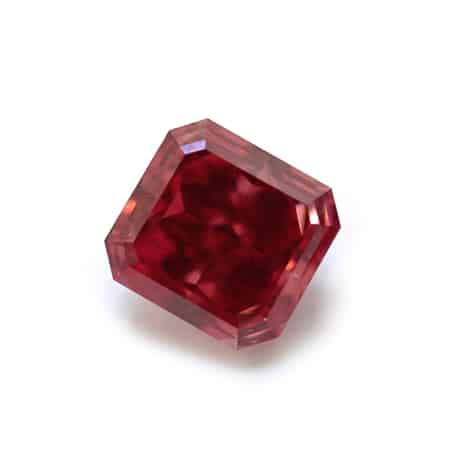In general, diamonds are considered pretty rare and are some of the most highly sought after gemstones in the world. However, lower quality diamonds are fairly common and are pretty accessible to nearly anyone. On the other end of the spectrum are the exceptional diamonds, which did not come around very often and can fetch tens of millions of dollars at auction. These highly valuable diamonds are always one or more of the rare types of diamonds on this list. Diamonds can be rare because of their color and/or their type, which is based on the level and type of chemical impurities present in the stone.
Overall, naturally colored diamonds are very rare and they only comprise 0.01% (across all colors) of the total diamonds mined around the world.
- Type IIa Diamonds
- Type IIb Diamonds
- Type Ib Diamonds
- Green Diamonds
- Orange Diamonds
- Purple Diamonds
- Pink Diamonds
- Blue Diamonds
- Red Diamonds
Current Value: Varies widely depending on cut, clarity, color, and carat weight; high quality examples are worth tens of millions of dollars
Notable Examples: Elizabeth Taylor Diamond (sold for $8.8 million); Koh-i-Noor and Cullinan Diamond (both British Crown Jewels); Daria-i-Noor (Iranian Crown Jewel); The Lesotho Legend (sold for $40 million); The Pink Legacy (sold for $50.4 million)
Largest Producer(s): Western Australia, India, Russia, Brazil, Siberia, South Africa, Tanzania, and Canada

photo source: Wikimedia Commons via Cyril Davenport
Type IIa diamonds take longer to form, which contributes to their exceptional quality. In general, Type IIa diamonds are very expensive, and some of the most notable examples are worth tens of millions of dollars or are even considered priceless.
Did You Know?
Type IIa diamonds are so spectacular and beautiful that many notable examples are part of various crown jewels, including the Koh-i-Noor and Cullinan Diamond (both British Crown Jewels) and the Daria-i-Noor (Iranian Crown Jewel).
Current Value: Varies widely depending on cut, clarity, color, and carat weight; high quality examples are worth millions of dollars
Notable Examples: The Cullinan Dream (sold for $25.4 million); The Okavango Blue; Blue Moon of Josephine ($48.4 million)
Largest Producer(s): India, Australia, South Africa, and Botswana

photo source: Wikimedia Commons via Dennis Tlaang
Since Type IIb diamonds are typically blue, gray, or a combination of those colors, they are highly valuable. Many famous Type IIb diamonds are worth tens of millions, but lesser examples can be purchased for a few thousand.
Did You Know?
Due to the presence of boron, Type IIb diamonds can conduct electricity.
Current Value: Varies widely depending on cut, clarity, color, and carat weight; high quality examples are worth millions of dollars
Notable Examples: Allnat Diamond (Est. value: at least $3 million); L’Incomparable (Est. value: $55 million); Sun of Africa Yellow Diamond (sold for $10.9 million); The Kahn Canary; Tiffany Yellow Diamond
Largest Producer(s): Western Australia, South Africa, India, Russia, Brazil, Sierra Leone, The Congo, and Canada

photo source: Wikimedia Commons via shipguy
Of the four types, Type Ib is the rarest, with less than 0.1% of diamonds receiving this classification. Type Ib diamonds contain scattered nitrogen atoms, which usually results in a yellow, brown, or orange hue.
Did You Know?
The best example of Type Ib diamonds are the famed Canary diamonds, which are vivid deeply yellow diamonds worth millions of dollars.
Current Value: Varies depending on secondary hue, cut, clarity, and other factors – ranges between a few thousand to about $1 million per carat
Notable Examples: Dresden Green; Aurora Green (sold for $16.2 million)
Largest Producer(s): Borneo, Brazil, Guyana, Venezuela, Zimbabwe, the Central African Republic, and India

photo source: Wikimedia Commons via ubahnverleih
Most natural green diamonds have a color that only resides on the surface, rather than having the color evenly distributed through the stone. This makes shaping green diamonds very difficult since the sparse coloring needs to be preserved.
Did You Know?
The green in natural green diamonds is caused by natural irradiation. Because gemologists know that irradiation can cause a green color to appear, many green diamonds on the market have been irradiated in a lab.
Current Value: Varies depending on secondary hue, cut, clarity, and other factors – ranges between a few thousand to about $1 million per carat
Notable Examples: The Orange (sold for $35.5 million); The Pumpkin Diamond (Est. value: at least $3 million)
Largest Producer(s): Western Australia and South Africa

photo source: Flickr via Fancy Diamonds
Orange diamonds get their color from the presence of nitrogen, which is what also makes yellow diamonds yellow. Usually, orange diamonds have either a brown, yellow, or pink overtone, with the orange hue being the stone’s secondary color. Any diamond with less than 25 percent orange tones, is labeled as “orangy.”
Did You Know?
For obvious reasons, orange diamonds are often nicknamed pumpkin diamonds and one notable orange diamond was known as The Pumpkin.
Current Value: Varies depending on secondary hue, cut, clarity, and other factors – ranges between a few ten thousand to a couple million dollars
Notable Examples: The Royal Purple Heart; The Supreme Purple Diamond Heart (Est. value: $4 million per carat); The Purple Orchid (sold for $4 million); The Argyle Violet (Est. value: $4 to $5 million)
Largest Producer(s): Western Australia, Siberia, Russia, Brazil, and Canada

photo source: The Jeweler Blog
While secondary colors typically cause a diamond to lose value, overall, purple diamonds are quite expensive, and often sell for a few tens of thousands of dollars and upwards of a few million. Purple diamonds mostly come from the Argyle Mine, Siberia, Russia, Brazil, and sometimes Canada.
Did You Know?
While the origins of the color of the purple diamond are not certain, it is believed that hydrogen and boron play a role in creating the purple color, as large amounts of both elements are found in purple diamonds.
Current Value: Between $100,000 per carat to $1 million per carat depending on color intensity, cut, clarity and other factors
Notable Examples: Daria-i-Noor and Noor-ul-Ain (both Iranian crown jewels); The Pink Star (sold for $71.2 million); Graff Pink Diamond (sold for $46 million); Martian Pink (sold for $17.4 million); and Princie Diamond (sold for $39.3 million)
Largest Producer(s): Western Australia, Brazil, Russia, Siberia, South Africa, Tanzania, and Canada

photo source: Wikimedia Commons
Like most of the world’s naturally colored diamonds, a majority of pink diamonds come from the Argyle Mine in Western Australia. Pink diamonds are also found in Brazil, Russia, Siberia, South
Africa, Tanzania, and even Canada.
Did You Know?
Similar to red diamonds, no one knows for sure how pink diamonds get their color. It is believed that pink diamonds were originally colorless diamonds that had their structures deformed and altered while coming up to the Earth’s surface.
Current Value: Depends on color intensity; can range from high thousands to at least a $1 million per carat
Notable Examples: The Hope Diamond (Est. value: $200 to $350 million); The Cullinan Dream (sold for $25.4 million); The Okavango Blue; Blue Moon of Josephine ($48.4 million)
Largest Producer(s): India, Australia, South Africa, and Botswana

photo source: Wikimedia Commons via 350z33
Blue diamonds receive their color from trace amounts of boron found in the diamond’s crystal lattice structure. A majority of the world’s blue diamonds come from India, followed by South Africa, Western Australia, and recently in Botswana.
Did You Know?
According to newer research, blue diamonds formed about 250 miles to 410 miles (410 to 660 kilometers) below Earth’s surface, making them the deepest diamonds in the world.
Current Value: Hundreds of thousands of dollars per carat
Notable Examples: Moussaieff Red Diamond (Est. value: $20 million); Hancock Red (sold for $880,000); Kazajian Red Diamond; DeYoung Red Diamond (Est. value: about $5 million)
Largest Producer(s): Australia, Africa, and Brazil

photo source: Flickr via Fancy Diamonds
example, the famous Hancock Red, the first known example of a red diamond, was sold for $880,000 in 1987, which was about $926,000 per carat!
In addition to the rarity, red diamonds are also pretty mysterious. Despite decades of research, no one is quite sure how red diamonds acquired their color. The leading theory is that red diamonds are actually really dark pink diamonds that experienced a plastic deformation in its crystal lattice structure, causing humans to see red instead of pink.
Did You Know?
Red diamonds have been found in the same places as pink diamonds and so far, no red diamond was ever uncovered without pink diamonds nearby.

